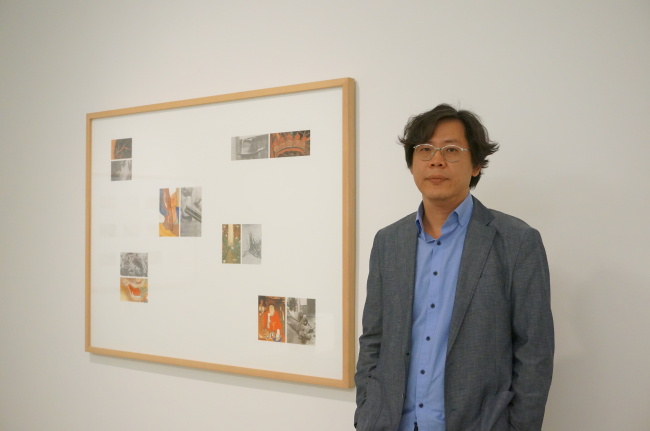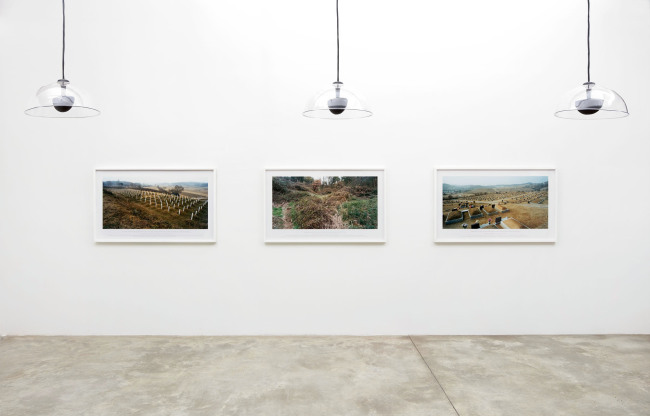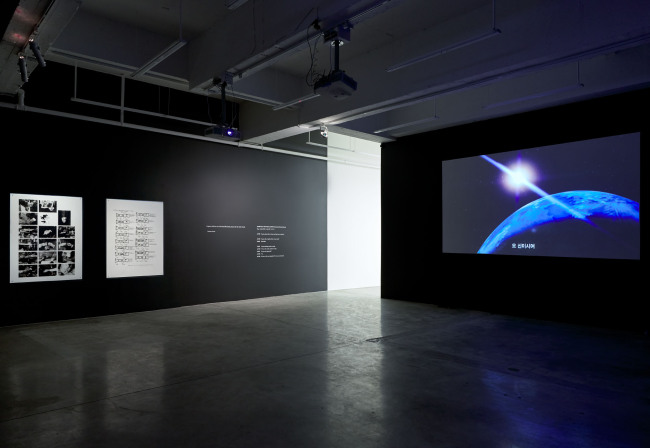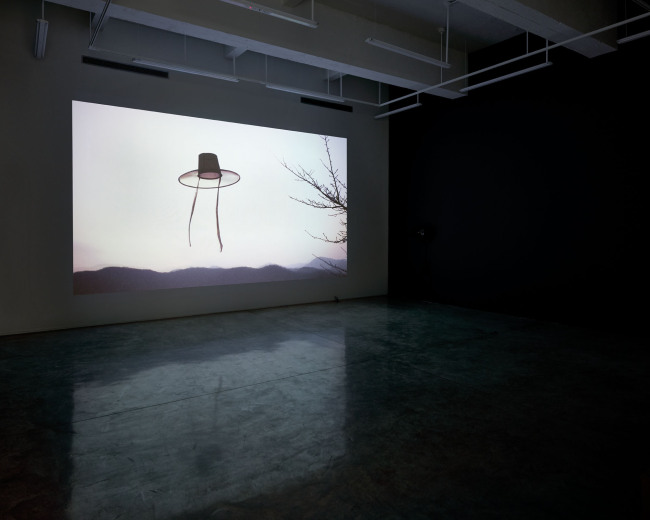[Herald Interview] Uncovering Korea's overlooked modern history
Artist-filmmaker-critic Park Chan-kyong holds his first solo show in U.S.
By KH디지털2Published : May 17, 2016 - 17:55
Park Chan-kyong thinks it’s a shame that most Koreans are forgetting crucial parts of their modern history -- the Korean War and the subsequent division -- and live as if such historical facts don’t impact their lives.
“I went to college in 1984. It was a time when students were more often seen in democracy protests on the streets than in classrooms. Political issues made up 80-90 percent of our generation’s life. From our younger days, we had been exposed to the nationwide anticommunist propaganda driven by the South Korean government,” said Park, in an interview at Tina Kim Gallery in New York, where he is holding his first solo show in the U.S., on May 5.

“Since entering college, I realized that the South-North division is a crucial issue that defines Korean society.”
For some 20 years, the 51-year-old artist, who is also an art critic and filmmaker, has explored various issues related to the division of the Korean Peninsula and fading Korean traditions, such as shamanism, in books, photography and films.
“I think the exhibition is well timed as the tension (between the two Koreas) has been high,” said Tina Kim, gallerist, at the exhibition opening on May 5.
“Park Chan-kyong is such an influential artist who has not been properly shown in America. He is an artist who has influenced so many Korean young artists. ... We made the show a little bit more historical, showing earlier film works as well as more recent works,” she added.
The exhibition features 10 key works that span more than a decade, including films, photographs, texts and sound installations.

On view is a set of three photographs of graveyards, titled “Three Cemeteries,” with accompanying sound captured from each burial site. Two photos portray public cemeteries in Paju, one for North Korean civilians and the other for North Korean and Chinese soldiers who died in the South when the border was drawn between the two Koreas. The graves all face northward, toward North Korea.
“There are similar cemeteries in East Asia. The war cemeteries in Okinawa are divided into one for Japanese civilians and soldiers and another for enemies. Every graveyard has some politics going on,” said Park.
Another site is the place where 1,224 bodies of anonymous female sex workers who worked near the U.S. military base in Dongducheon, Gyeonggi Province, were buried without any marking.
In Korea, Park is often categorized as a post-Minjung artist whose works explore sociopolitical aspects of Korean history in a more “sophisticated way” that is not as explicit as the more progressive Minjung artists. Minjung art refers to the political art movement that emerged in the 1980s as part of the country’s democracy movements.
In films, Park traverses between conceptual artistic films and commercial movies in dealing with political issues and shamanism.

The two-channel video “Power Passage,” on view at the gallery show, compares “two starkly different dramas of the Cold War” that happened in 1975 -- the U.S.-Soviet Union joint space ship flight and the discovery of the secret underground tunnel dug by North Koreans to send spies to the South. Park won the prestigious Hermes Misulsang art award in 2004 with the art film.
More recently, Park has made films that portray Korean shamanism, which he described as an “overlooked, forgotten” tradition that needs to be recognized.

The exhibition screens the 2011 film “Night Fishing,” which he made with his brother, the celebrated filmmaker Park Chan-wook. The Park brothers also work on joint movie productions under the name “PARKing CHANce.” The movie was commissioned by KT, a Korean telecom company, and made using the iPhone 4.
“The name means we work together only when we can spare time from our individual schedules -- we call that time ‘a chance to park,’” he said jokingly.
The 33-minute film, which won the Golden Bear for the Best Short Film award at the Berlin International Film Festival in 2011, is a thriller featuring old Korean shamanic practices.
Park’s interest in shamanism goes back to the year 2007 when he discovered several indigenous Korean shamanic practices that have long been held in a town named Sindoan, home to many local religious sects, in Gyeryong, South Chuncheong Province.
“Sindoan was a mecca of Korean shamanism. When you go there, you will meet a lot of people praying at shrines. I thought there is something really deep there. I was intrigued and felt sympathy for them,” he said.
Park introduced various religious practices of Sindoan in a 2007 film. Since then, he has explored modern-day Korean shamanism in films and artistic projects. In 2012, he introduced a story of a German woman who became a spiritual daughter of Korean shaman Kim Keum-hwa, in a short film. In 2014, Park released a feature-length commercial film on the life of Korean female shaman Kim Keum-hwa, starring actresses Moon So-ri and Kim Sae-ron.
“We experienced a war in the 1950s, lost everything in the war. Now Korea is famous for ‘Gangnam Style.’ But I think we have lost and forgotten many of our traditions,” Park noted, pointing out the period of oppression Korean shamanism underwent amid rapid modernization that began in the 1970s.
The exhibition runs until June 11. For more information, visit www.tinakimgallery.com.
By Lee Woo-young (wylee@heraldcorp.com)


















![[Today’s K-pop] Treasure to publish magazine for debut anniversary](http://res.heraldm.com/phpwas/restmb_idxmake.php?idx=642&simg=/content/image/2024/07/26/20240726050551_0.jpg&u=)